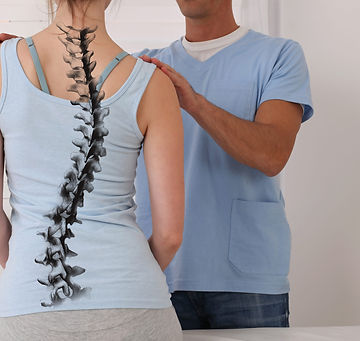

Health Conditions
HEALTH CONDITIONS
If you have any of the following health conditions, you may be a candidate for non-surgical spinal decompression therapy and chiropractic care:
DEGENERATIVE DISC DISEASE
Degenerative disc disease (DDD) is when your spinal discs wear down. Spinal discs are rubbery cushions between your vertebrae (bones in your spinal column). They act as shock absorbers and help you move, bend and twist comfortably. Everyone’s spinal discs degenerate over time and is a normal part of aging. When the cushions wear away, the bones can start to rub together. This contact can cause pain and other problems, such as:
Symptoms:
-
Pain in the neck or low back
-
Leg or buttock pain
-
Pain can be mild, moderate or severe
-
Symptoms may increase while bending, twisting, or lifting
-
Symptoms are relieved by leaning forwards (like using a walker or leaning on a grocery cart while shopping), sitting and lying down.
-
Symptoms can get worse as we age

Spinal degeneration is normal as we age. However, there are several risk factors that can lead to more advanced phases of DDD at younger ages, including occupation (repetitive physical tasks), physical activity, obesity, and lifestyle. Here are the four phases:
-
Phase I. In the early stage of DDD, the intervertebral discs lose their ability to retain water, causing dehydration. This results in a reduction of disc height and may lead to a decrease in the space between adjacent vertebrae. The outer layer of the disc, known as the annulus fibrosus, may develop minor tears and cracks. These can contribute to disc instability and the potential for future damage.
-
Phase II. As the condition progresses, the inner core of the disc (nucleus pulposus) may push against the weakened annulus fibrosus, causing the disc to bulge outward. This can put pressure on adjacent structures, such as nerves and spinal cord. Individuals may experience increased and more persistent pain, often radiating into the arms or legs. This is due to the compression of nerves or spinal cord by the bulging disc.
-
Phase III. In this stage, the outer layer of the disc may develop a tear or rupture, allowing the inner nucleus pulposus to extrude through the annulus fibrosus. This condition is commonly known as a herniated disc or slipped disc. Herniated discs can cause severe and often constant pain, as well as other symptoms such as numbness, tingling, and muscle weakness in the areas served by the affected nerves. The extent of these symptoms can vary depending on the location and size of the herniation.
-
Phase IV. In the advanced stage of DDD, the affected discs may lose a significant amount of height, resulting in a decrease in the space between the vertebrae. Bone Spurs (Osteophytes): To compensate for the loss of disc height and instability, the body may form bony growths, known as bone spurs, along the edges of the vertebrae. These can further impinge on nerves and spinal structures. Chronic and Debilitating Pain: At this stage, individuals may experience chronic and debilitating pain, reduced mobility, and limitations in their daily activities. Surgical intervention may be considered for pain management and stabilization.
We believe that your spinal hygiene should be taken seriously. Most individuals take the time and effort out of their busy lives to go to the dentist to take care of their dental hygiene, but often neglect their spine. Maintaining a healthy lifestyle and routine chiropractic care can help keep the spine aligned and prevent spinal degeneration as we age.
If you believe you could benefit from high-quality care, consider getting treatment from the staff at Canadian Chiropractic Spinal Decompression Centres. We provide degenerated disc treatments in Mississauga and Oakville, Ontario.
Mississauga Location:
250 Dundas St W #401, Mississauga, ON L5B 1J2
647-800-2137
Hours:
Monday:
Tuesday:
Wednesday:
Thursday:
Friday:
Saturday:
Sunday:
9am - 12pm
9pm - 6pm
9am - 12pm
2pm - 6pm
1pm - 6pm
9am - 12pm
Closed












